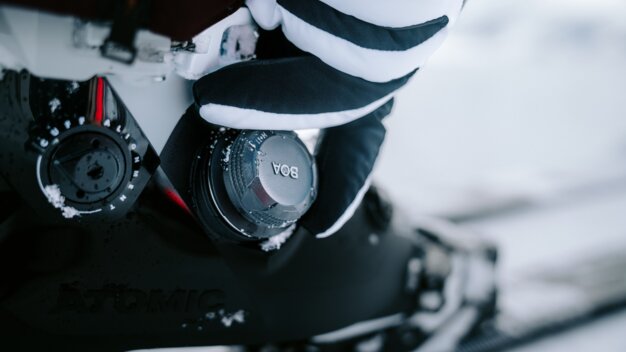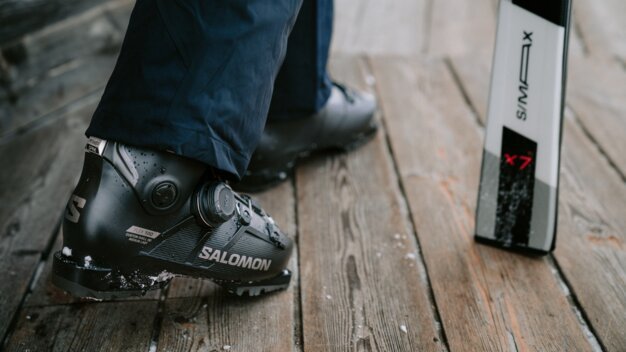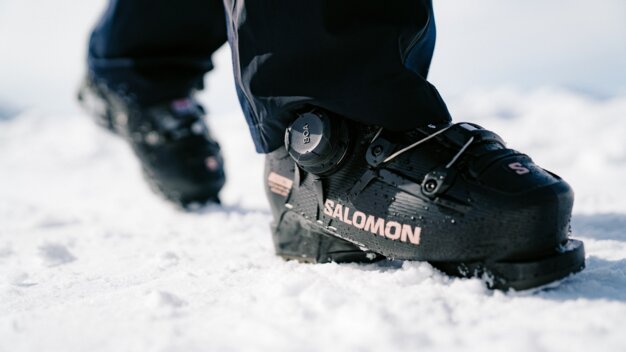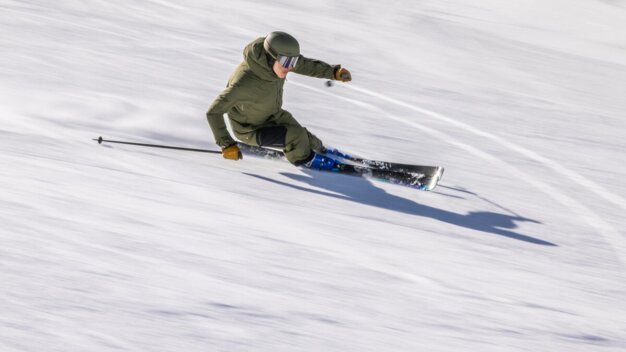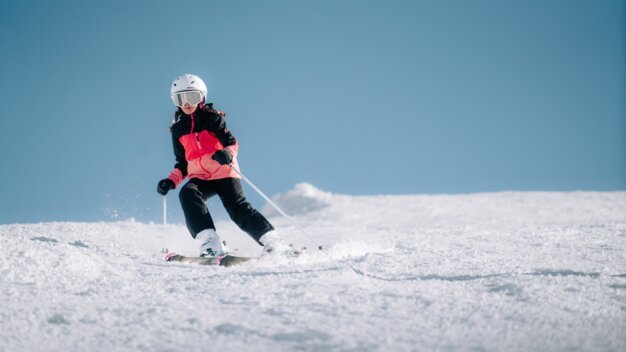
Are you looking for new ski boots and are unsure what product is right for you? Your friends keep going on about their ski boots’ “flex”, and you have no idea what they’re talking about?
Don’t worry! With INTERSPORT Rent you‘ll be talking shop with them in no time at all – thanks to your newly acquired knowledge about ski boot flex. All you have to do is read on!
What does ski boot flex mean?
Quite simply, the flex value of a ski boot refers to its stiffness. The flex refers to the level of resistance the boot provides when you bend your ankle forward. In general, the flex index varies between 60 and 140. The lower the number, the more flexible the boot – and the higher, the stiffer. Higher flex numbers are primarily found in high-performance or race boots.
You can best feel the flex of your ski boot when bending forward. The higher the flex, the higher its resistance. This makes your boot stiffer and somewhat less comfortable to wear, but also gives you better energy transfer from leg to ski.
During the production process, ski boot flex is influenced by various parameters:
- the materials used in the construction of the outer shell
- material thickness
- the overall construction
- the number of buckles
- the strength of the strap at the top of the collar
- the stiffness of the inner boot
NB: Even though it might sound logical – flex ratings are not standardised! Every manufacturer has their own standard, and different brands and categories may differ in spite of having the same flex number.
This means that a ski boot with a flex of 80 can feel stiffer and less flexible than another brand’s product with a flex of 100.
Soft or stiff, what’s better?
A flex of 90 or 130 – what’s better? Well, that’s hard to say. Because the “perfect flex” largely depends on your preferences and individual needs.
As mentioned above, the stiffness of your ski boot primarily indicates the level of resistance it will provide when bending your ankle forward. But people are different – and some of them generally find it easier to bend their ankles than others.
So the golden rule is: Choose the flex rating that best fits your build, weight and skiing style. With a boot that’s too hard, you will have less control over your skis. A boot that’s too soft will decrease your energy transmission. On the other hand, both high and low flex values have their advantages ...
The advantages of soft flex
- suitable for skiers with a light build and stiff ankles
- recommended for beginners and leisure skiers
- good vibration dampening abilities and high wearing comfort
- allows more room for mistakes
The advantages of a stiffer flex
- suitable for skiers with a solid build and flexible ankles
- recommended for more aggressive skiing
- gives you more control over your skis
As you can see, not every flex is for every skier. That’s why it’s so important to try on several different boots and get some professional advice. Plus, there are some general recommendations …
Flex categories for women’s ski boots
- beginners and leisure skiers: 60–90
- advanced skiers: 90–110
- very accomplished skiers: 110–120
- competitive athletes: from 130
Flex categories for men’s ski boots
- beginners and leisure skiers: 70–90
- advanced skiers: 90–120
- very accomplished skiers and men with a robust build: 120–130
- competitive athletes: from 140
Flex categories for children’s ski boots
- shoes sizes between 14 and 21 Mondopoint: no flex rating
- shoe sizes between 22 and 26 Mondopoint: 60–90
Our tip: The more accomplished your child is on the slopes, the higher flex rating you can choose.
What influences the flex rating?
As you can see, your build and skiing style influence your ideal flex rating. However, finding the “perfect“ flex is not an exact science.
After all, different materials mean different properties. For instance, many synthetic materials are temperature-sensitive. This means that a ski boot that feels quite flexible when trying it on in store can feel significantly stiffer in sub-zero temperatures on the mountain.
In addition to the temperature, other factors can affect the stiffness of your boot:
- the tightness of the buckles at the cuff
- the age of the ski boot: Plastic gets softer with time, decreasing the stiffness of your boots.
How to find the perfect flex for your needs
There’s only one way to go: Get some expert advice and try on several different products! Professional support is vital when buying ski boots. And there’s another important aspect: knowing your abilities. You will only be able to find the ideal ski boot flex if you’re aware of your actual skiing skills.
Think about your preferred terrain in advance and try on several different brands.
INTERSPORT Rent tip
Our INTERSPORT RENTertainers are true winter sports experts. Flex ratings, stiffness and the like are their daily business.
That’s why it’s a good idea to make use of the expert advice at one of our numerous INTERSPORT Rent shops – many of them right by the slope. Together with the experts, it’s easy to find the perfect ski boot for your next snow adventures!

